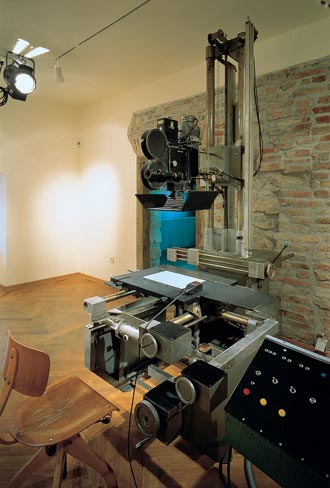Permanent Display 43. The Zagreb School of Animated Film
 At the 1959 Cannes Festival, the famed film theorist Georges Sadoul uttered the phrase the Zagreb School of Animated Film for the first time. In this simple sentence, he defined an artistic and philosophical world-view that set its mark on the history of animation in the seventies.
At the 1959 Cannes Festival, the famed film theorist Georges Sadoul uttered the phrase the Zagreb School of Animated Film for the first time. In this simple sentence, he defined an artistic and philosophical world-view that set its mark on the history of animation in the seventies.
A professional animated film studio was created in Zagreb Film in 1956. In 1962, Dušan Vukotić won an Oscar for his film The Surrogate. This was the first-ever winner of this prestigious prize for films that was not American. Practically, in the world of film, there is no prize that has not found its way to Zagreb Film.
Animation was brought to Zagreb at the beginning of the century by Russian émigrés and underwent modest development between the wars in advertising films and teaching-aid miniatures from the Andrija Štampar School of Popular Health. Traces of it can be seen in painting (Croatian expressionism, the artistic and social movement called Zemlja (Earth), which gave birth to the Croatian naive painters, and the Exat 51 group, a movement which cleared the paths for artistic freedom)) and in literature (the tales of A. G. Matoš and Ivana Brlić Mažuranić). The germs of animation include cartoon strips and illustration. The trail was blazed for the Zagreb School by the brilliant strip artists Andrija Maurović and Walter Neugebauer.
Historically speaking, the beginning of the Zagreb School was marked by the film The Big Meeting, created in the editorial offices of the comic paper Kerempuh, whose chief editor was Fadil Hadžić.
Apart from photographs and original drawings from the films of some of the most important creative artists of the Zagreb School, we can also see here a little bit of the original technological process through which the famed series Professor Balthazar came into being. The first sketches, made on the basis of the script and the storyboard, are turned at the drawing board into the main drawings, then transferred to celluloid and filmed with a rostrum camera. Four and twenty drawings for a single second of film.
Nada Premerl, Joško Marušić

